Gyeongju Poseokjeong Pavilion Site (경주 포석정지)
0m 36450 2020-10-06
816, Namsansunhwan-ro, Gyeongju-si, Gyeongsangbuk-do
+82-54-745-8484
Poseokjeong Pavilion served as a separate palace where kings enjoyed banquets with nobles. The building no longer exists, but the abalone-shaped stone water canal still remains, speculated to have been built during the Unified Silla period although the exact year is unknown. The water canal has an estimated length of 10 meters, with a x_width of approximately 35 centimeters and an average depth of 26 centimeters. Based on Chinese writings from 353, it is said that drinking glasses were floated on the canal. One popular party game had guests creating poems before the glass had passed nine sections of the canel. Guests who could not do this had to drink three glasses. Modern research has shown that the site was not merely a place for fun, but also served as a meeting venue for the royal family, as well as for holding memorial services.
Gyeongju Najeong Well (경주 나정)
963.3587593444324m 12765 2020-04-06
Tap-dong, Gyeongju-si, Gyeongsangbuk-do
+82-54-779-6100
To the southeast of the royal tomb, is a small monument that has been erected among the pine trees; next to the monument is a well called Najeong. According to Samguksagi (Historical records of the Three Kingdoms) and Samgungnyusa (Memorabilia from the three dynasties), Park Hyeokgeose, the founding monarch of Silla, was born by this well. In 69 BC, Sobeolgong, the head of Goheochon Village, saw a white horse on its knees by the well. When he approached the well he found that the horse had magically disappeared and that a large egg was left in its place, from which a boy was born. When the boy turned 13 years old (57 BC), he was appointed king by the village chiefs and began to rule the area then called ‘Seorabeol’. A memorial stone (2.25 meters high, 45 centimeters long, and 21 centimeters wide) was erected in 1803 in the third year of King Sunjo's rule (Joseon dynasty) detailing the historical origins of the founding father of Silla.
Gyeongju Bae-dong Samneung Royal Tombs (경주 배동 삼릉)
1.2 Km 24052 2020-04-06
Bae-dong, Gyeongju-si, Gyeongsangbuk-do
+82-54-779-6100
Samneung meaning "three royal tombs," has strong ties to history. The three royal tombs house three kings of the Silla Kingdom: King Adala (8th King of the dynasty), King Sindeok (53rd) and King Gyeongmyeong (54th).
King Adala, who cared deeply for his people, went to war after his citizens were abducted by the invaders of Baekje. But when Baekje asked for a peace treaty, King Adala released the prisoners he took during the engagement. During his rulling, a kingdom in Japan sent an envoy to ask for friendly relations with Silla. King Adala’s tomb is 58m in circumference at the base, 5.4m in x_height and 18m in diameter.
When King Hyogong died without any heirs, the people of the kingdom crowned his son-in-law as their next king – King Sindeok. During his reign, King Sindeok devoted himself to protecting his kingdom from invasions by Gyeonhwon and Gungye. The royal tomb is 61m in circumference at the base, 5.8m in x_height and 18m in diameter. It was robbed twice, inviting investigations in 1953 and 1963. The investigations revealed the tomb to be a chamber made of stone.
King Gyeongmyeong, the son of King Sindeok, together with Wanggeon, the founder of the Goryeo dynasty, successfully defeated Gyeonhwon’s attack against Daeyaseong Fortress. During his reign, he attempted to establish diplomatic relations with the Hudang dynasty of China, but was unsuccessful. The tomb is 50m in circumference at the base, 4.5m in x_height and 16m in diameter.
Gyeongju Five Royal Tombs (경주 오릉)
1.7 Km 27238 2022-12-27
38-9, Geumseong-ro, Gyeongju-si, Gyeongsangbuk-do
+82-54-750-8614
The Five Royal Tombs (called Oreung in Korean) have been officially designated Historic Site No. 172 and are the final resting places of four kings of the Park clan—King Park Hyeokgeose (founder of the Silla Kingdom), King Namhae, King Yuri, and King Jabi—and one queen (Queen Aryeong, wife of King Park Hyeokgeose).
To the east of the royal tombs lies Sungdeokjeon Shrine, which holds the ancestral tablet of King Park Hyeokgeose. Behind the shrine is the Aryeongjeong Well, said to be the birthplace of Queen Aryeong.
KELIMGUNG [Korea Quality] / 계림궁 [한국관광 품질인증]
1.9 Km 14099 2020-09-09
932, Poseok-ro, Gyeongju-si, Gyeongsangbuk-do
+82-10-2705-8121
According to a Korean myth, Gyerim Forest in Banwolseong Fortress, Gyeongju is the birthplace of Silla Kingdom founder Kim Alji (of Gyeongju Kim’s Clan) about two thousand years ago. Gyerimgung Hanok Pension is located 2 kilometers from Banwolseong Fortress and is named after the forest. Inside the gate are guestrooms named “Yoseok Room” with a large window in the detached building, “Sirim Room” and “Alji Room” in the main building, and “Asadal Room” and “Asanyeo Room” right next to it. The guesthouse has a shared kitchen and two “wondumak” (a Korean lookout hut on stilts usually in a melon field for guests to use). Barbecue facilities are also available upon reservation. The guesthouse offers a number of fun traditional programs including “Starting a Fire for Traditional Korean Iron Pot,” “Neolttwigi,” and “Yunnori.” Gyeongju Oreung in the vicinity of the guesthouse is a great place to take a walk. Nearby popular tourist destinations include Banwolseong Fortress, Cheomseongdae Observatory, and Daereungwon Tomb Complex. The guesthouse can be a great choice for those looking for a quiet place to stay overnight because it's situated in a residential area slightly off the main tourist zone.
Gyeongjuhanok 1st [Korea Quality] / 경주한옥1번가 [한국관광 품질인증]
2.0 Km 948 2023-10-25
20 , Cheonwon 1-gil, Gyeongju-si, Gyeongsangbuk-do
+82-10-9505-5367
Standing at the entrance of Cheonwon Village in Gyeongju, Gyeongsangbuk-do, Gyeongju Hanok First is a hanok stay combining the beauty of tradition with modern convenience. All rooms are Korean-style with comfortable bedding on the floor, and all have a toilet and bathroom. One guestroom has its own kitchen, while the others have basic cooking facilities in a shared kitchen. The spacious yard is decorated with figurines in traditional clothes. Nearby tourist attractions include Anapji Pond, Cheomseongdae Observatory, and Gyeongju Museum.
Wadamjung [Korea Quality] / 와담정 [한국관광 품질인증]
2.1 Km 814 2020-09-09
18, Cheonwon 1-gil, Gyeongju-si, Gyeongsangbuk-do
+82-54-772-5400 / +82-10-6571-3412
Wadamjung in Cheonwon Village, Gyeongju is a modern traditional Korean guesthouse built in May 2017, with both the features of a traditional Korean house and modern facilities such as air conditioner and bathroom. It has a total of nine guestrooms that can accommodate three to six people, and there is a kitchen that can be shared among the guests. A large group can book a stand-alone guestroom that can accommodate up to 12 people, inclusive of a kitchen. There are various traditional artifacts and items with which to play a traditional game in the large yard, such as Jegi (Korean shuttlecock game) and Tuho (Arrow-throwing). In addition, there are a number of tourist destinations such as Cheomseongdae in Wolseong District, with lots of historical sites in Gyeongju as well as Gyeongju National Museum.
Gyeongju Oreung Hanok [Korea Quality] / 경주오릉한옥 [한국관광 품질인증/Korea Quality]
2.1 Km 2 2021-03-29
12-17, Gukdang 2-gil, Gyeongju-si, Gyeongsangbuk-do
This hanok (traditional Korean house) guesthouse is located right across from the Five Royal Tombs in Gyeongju. Because there are no obstructions on the way, the guesthouse enjoys a remarkable view of the ancient city. Located about 2.5 km from Gyeongju Intercity Bus Termina and about 2 km from Gyeongju Historic Areas, this guesthouse has a dignified yet comfortable atmosphere.
It is run by a mother-and-daughter team, whose attention to detail and care can be felt tangibly in the comfortably furnished rooms: well-maintained lawn and trees, double doors that help to prevent drafts and noises, and clean white bedding appreciated by many visitors. Rooms with ondol (under-the-floor heating system) are ideal for two. From walls covered by traditional Korean paper to clean and comfortable bedding, the room exudes comfort. A raised floor space in front of the room is a great place to see the scenery and a great place for photography.
Another strength of Gyeongju Oreung Hanok guesthouse is its accessibility. Hwangnidan-gil Street, a bustling street full of restaurants and cafes, is only a 15-min walk away, while Gyeongju’s famous sights such as Cheomseongdae Observatory, Daereungwon Ancient Tomb Complex, Donggung Palace and Wolji Pond, and Gyeongju National Museum are only a 10-min drive away.
Hanok Stay Sohwa [Korea Quality]한옥스테이 소화[한국관광 품질인증]
2.2 Km 0 2023-05-23
5 , Gukdang 2-gil, Gyeongju-si, Gyeongsangbuk-do
+82-507-1325-7205
Hanok Stay Sohwa near the famous Hwangnidan-gil in Gyeongju, Gyeongsangbuk-do, is a modern hanok that opened its doors in 2022, and combines tradition with sophistication. Accommodation consists of a living room, two sleeping rooms (bedroom and ondol), two bathrooms and a kitchen, plus an outdoor terrace and a heated mini swimming pool. Visitors will find rest and comfort here, however busy and stressed they were when they set out. The hanok stay only accepts bookings from one group per day.
Gyeongsangbuk-do Forest Research Institute (경상북도 산림환경연구원)
2.4 Km 33773 2021-02-01
367, Tongil-ro, Gyeongju-si, Gyeongsangbuk-do
+82-54-778-3813
Located at the foot of Namsan Mountain in Gyeongju, Gyeongsangbuk-do Forest Research Institute is a popular spot for field trips and relaxation due to the institute's rare and rural forestry along with well-preserved endangered plants and wild flowers.
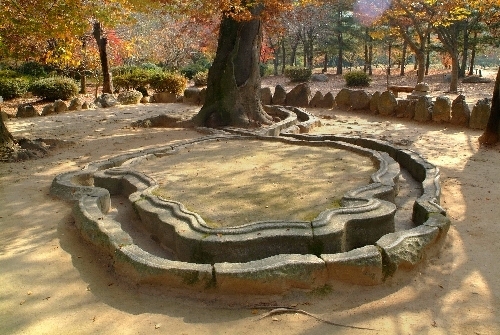
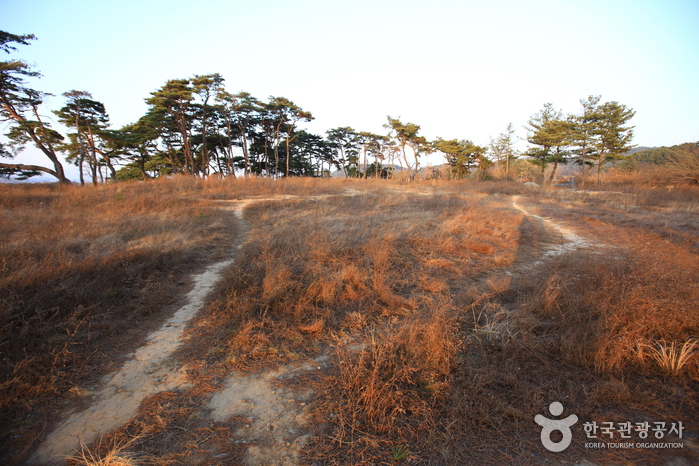
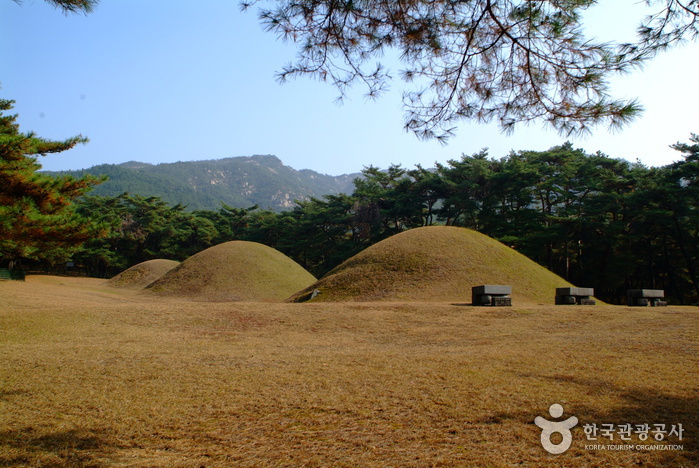
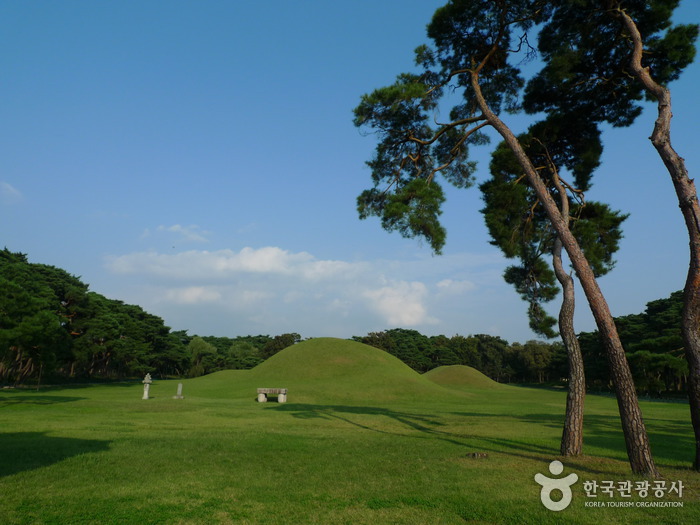
![KELIMGUNG [Korea Quality] / 계림궁 [한국관광 품질인증]](http://tong.visitkorea.or.kr/cms/resource/67/2543967_image2_1.jpg)
![Gyeongjuhanok 1st [Korea Quality] / 경주한옥1번가 [한국관광 품질인증]](http://tong.visitkorea.or.kr/cms/resource/15/3021415_image2_1.jpg)
![Wadamjung [Korea Quality] / 와담정 [한국관광 품질인증]](http://tong.visitkorea.or.kr/cms/resource/35/2557635_image2_1.jpg)
![Gyeongju Oreung Hanok [Korea Quality] / 경주오릉한옥 [한국관광 품질인증/Korea Quality]](http://tong.visitkorea.or.kr/cms/resource/35/2706135_image2_1.jpg)
![Hanok Stay Sohwa [Korea Quality]한옥스테이 소화[한국관광 품질인증]](http://tong.visitkorea.or.kr/cms/resource/72/2948972_image2_1.jpg)
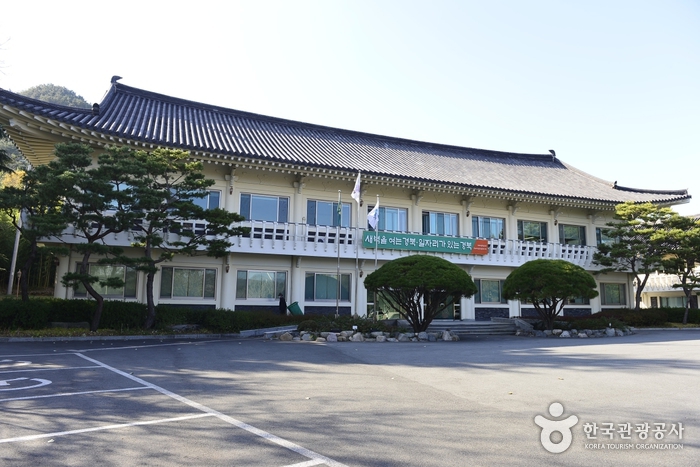
 English
English
 한국어
한국어 日本語
日本語 中文(简体)
中文(简体) Deutsch
Deutsch Français
Français Español
Español Русский
Русский